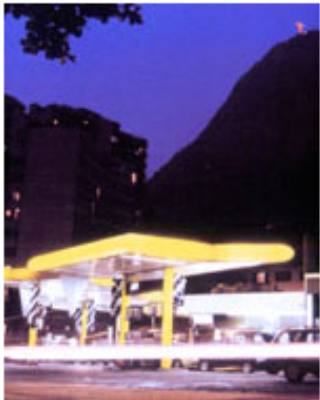Gambiarra
dal 17/9/2003 al 9/11/2003
Segnalato da
17/9/2003
Gambiarra
Gasworks Gallery, London
An exhibition dedicated to the emerging art and curatorial approach from Brasil. This is also first UK presentation of five exhibited artists

All of the artists and curators included in Gambiarra draw on the languages of contemporary popular culture of Brazil as sources of inspiration and use their practices to comment on the political and social aspects of a country which has profound economic contradictions and a population that is one of the most ethnically diverse in the world.
Working in a wide range of media, the artists and curators included in Gambiarra are representative of a younger generation of practitioners whose work possess the same originality, richness and diversity that we have come to associate with visual art from this country, combined with a more explicit and overtly political voice.
Gambiarra, or making do when translated from Brazilian Portuguese, refers to a common strategy employed by all of the artists involved, who not only see this as a plausible methodology for fabricating works, but also, and more importantly, it is seen as a powerful and positive metaphor for their reflections on the state of cultural institutions and the complexity of their position as part of and in relation to those institutions.
The conscious decision by the artists and curators in this exhibition to use short-term solutions, low-tech materials and to make do with what is to hand rarely has direct reference to their own personal situation, but variously refers to the multitude of extreme inequalities that have become part of the fabric of Brazilian society, inherently affecting its values and symbols.
Including works from private and public collections from Latin America, the USA and Europe, as well as newly commissioned pieces, the exhibition will also include two three month residencies for Ducha, and Jarbas Lopes who will be invited to make a series of off-site interventions in response to the different exhibition locations. During his residency, Jarbas Lopes will be working with The London Printworks Trust, Brixton to create a public artwork made in collaboration with ten young people who live in South London.
Ducha who lives and works in Rio uses the urban landscape to make interventions which are offered as a challenge to both political and social realities. His most well known work to date Projeto Cristo Redentor, 2001, involved turning the statue of Christ on the Sugar Loaf Mountain blood red for one hour by the simple intervention of red gelatin film used to cover the existing white spotlights. This is a dramatic and moving gesture of creative insurrection, realised by very simple means with the artist and his eight colleagues climbing illegally to the top of the mountain to realise the piece.
Jarbas Lopes, who also creates public interventions, employs similar tactics to effect direct political and social critiques. The O debate series sees Lopes manipulating found posters of political candidates for the Brazilian elections. By weaving two posters of opposing candidates together, then replacing them on the street, Lopes comments on the corruption of Brazilian governmental politics and the apparent lack of choice for the voting public. Another work, Deegrace is a tent like construction made from sewn raffia strips taken from political advertising banners on the streets of Rio. Lopes edits the banners and creates a random patchwork of words and sentences rendering the original reading of the banners impotent and meaningless.
Efrain Almeida's practice includes hand-carved cedar wood sculptures that appear purposefully crude and nostalgic, as well as drawings and watercolours. Almeida's practice taps into sacred and popular statuary used in the religious festivals of the Sertao, Northern Brazil. He intertwines both traditional and personal iconographies with critical references to present day culture. Through this his work takes on and explores stereotypical tropes of authenticity associated with folk traditions from Brazil.
Marepe lives and works in Bahia in the North of Brazil. The local daily rituals and traditions heavily influence his work producing installation and performances, which often include the use of everyday , possibly mundane objects such as common basins, filters, cloth bags, old clothes and fruit. Through his work, Marepe asks the viewer to see the beauty, simplicity and grace that occurs within an everyday context besieged by extreme material poverty. His practice perhaps provides the most explicit example of making do as Marepe's practice often portrays the vast economic differences between the North and South of Brazil
Curatorial collective Capacete Entertainments led by artist Helmut Batista, exhibit and produce previously unseen conceptual and contextual works, comprising of a variety of artistic strategies. Documentation of these projects is key and serves as a starting point for the self-representation of a group of national and international artists. Previous Capacete commissions include: Ricardo Basbaum, Dominque Gonzalez-Foerster, Rubens Mano, Pierre Huyghe and Shimabuku. For Gambiarra, Capacete has worked with each of the four exhibiting artists to produce an artist's journal. Each of the journals have been designed collaboratively with the artist and will include retrospective documentation of the artists practice, a commissioned text in English and Brazilian Portuguese and a commissioned work, which will be included as an insert into the publication. The journals will be presented as a set and will function as a catalogue for the exhibition.
Image: Ducha, Projeto Cristo Redentor, 2001, Red gels placed over the spot-lights at Sugar Loaf Mountain
Gasworks Gallery
155 Vauxhall Street
London SE11 5RH
Tel: 020 7582 6848
Fax: 020 7582 0159



